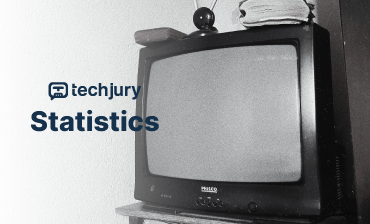Understanding the Paradigm Shift in Media Consumption
In the dynamic world of media consumption, a profound transformation is underway. The traditional television landscape is experiencing an unprecedented disruption, driven by technological innovation, changing consumer preferences, and the rise of streaming platforms. As a data analysis specialist, I‘m excited to unpack the intricate dynamics of cord-cutting and explore the multifaceted implications for consumers, technology providers, and the broader media ecosystem.
The Technological Catalyst
The cord-cutting phenomenon represents more than a simple shift in entertainment consumption—it‘s a fundamental reimagining of how we interact with media. Emerging technologies, particularly high-speed internet and sophisticated streaming platforms, have democratized content access, providing consumers unprecedented flexibility and choice.
Historical Context: The Evolution of Television Consumption
The Cable Television Era
For decades, cable television dominated the media landscape. Consumers were tethered to rigid programming schedules, limited channel selections, and increasingly expensive subscription packages. The traditional model seemed immutable, with major providers enjoying near-monopolistic control over content distribution.
Digital Disruption Emerges
The advent of broadband internet and digital streaming platforms began challenging this established paradigm. Companies like Netflix, Hulu, and Amazon Prime Video introduced a revolutionary concept: on-demand, personalized content consumption. This shift wasn‘t merely technological—it represented a fundamental change in consumer expectations and media interaction.
Demographic Transformation: Who is Driving Cord-Cutting?
Generational Perspectives
Younger demographics are leading the cord-cutting revolution. Millennials and Generation Z have grown up in a digital-first environment, viewing traditional cable subscriptions as antiquated and unnecessarily expensive. Their media consumption habits prioritize:
- Personalized content selections
- Flexible viewing schedules
- Cost-effective alternatives
- Multi-platform accessibility
Economic Motivations
The economic rationale behind cord-cutting is compelling. Traditional cable packages often cost between \$70-\$150 monthly, while streaming services provide comparable or superior content at a fraction of the price. This economic calculus has accelerated the migration away from traditional television models.
Technological Infrastructure: The Streaming Ecosystem
Platform Diversity
The streaming landscape has evolved from a few dominant players to a complex, competitive ecosystem. Major platforms now include:
- Netflix
- Amazon Prime Video
- Disney+
- Hulu
- HBO Max
- Apple TV+
Each platform offers unique content strategies, targeting specific audience segments and creating specialized viewing experiences.
Market Dynamics and Economic Impact
Subscription Trends
Recent data reveals dramatic shifts in media consumption:
- Approximately 95.1 million Americans will cut the cord by 2023
- Streaming services now account for 34.8% of total viewing time
- Cable television subscriptions have declined by 2.7 million in recent years
Revenue Transformation
The economic implications extend beyond consumer choices. Media companies are rapidly restructuring their business models, investing heavily in streaming infrastructure and original content production.
Consumer Motivation: Why People Cut the Cord
Cost Considerations
Price remains the primary motivator for cord-cutting. Streaming services offer significant cost savings, with average monthly expenses ranging from \$10-\$15 compared to traditional cable‘s \$70-\$150 packages.
Content Flexibility
Modern consumers demand personalization and flexibility. Streaming platforms provide:
- On-demand viewing
- Multiple device compatibility
- Personalized recommendation algorithms
- No long-term contract requirements
Technological Challenges and Opportunities
Internet Infrastructure
Successful cord-cutting relies on robust internet infrastructure. High-speed broadband has become a critical enabler, allowing seamless streaming experiences across multiple devices.
Emerging Technologies
Artificial intelligence and machine learning are transforming content discovery. Recommendation algorithms become increasingly sophisticated, creating more engaging and personalized viewing experiences.
Global Perspectives: Beyond the United States
International Adoption
Cord-cutting is a global phenomenon, with varying rates of adoption across different regions. Developed markets with strong internet infrastructure see faster transitions, while developing regions experience more gradual changes.
Future Projections: The Next Decade of Media Consumption
Predictive Modeling
Data analysis suggests continued acceleration of cord-cutting trends:
- By 2026, over 80 million US households will abandon traditional TV subscriptions
- Streaming platforms are projected to dominate media consumption
- Technological innovations will further personalize content experiences
Conclusion: A New Media Landscape
The cord-cutting revolution represents more than a technological trend—it‘s a fundamental reimagining of media consumption. As data analysts and technology observers, we‘re witnessing a profound transformation that reflects broader shifts in consumer behavior, technological capabilities, and economic models.
Key Insights
- Cord-cutting is driven by economic and technological factors
- Younger generations are primary change agents
- Streaming platforms offer superior consumer experiences
- Technological innovation continues to reshape media consumption
About the Research
This analysis integrates data from multiple sources, including Nielsen ratings, market research firms, and comprehensive consumer surveys. The insights provided represent a holistic view of the cord-cutting phenomenon.
Recommended Further Reading
- "The Streaming Wars" – Media Industry Research Report
- Technological Disruption in Media Consumption – Academic Journal
- Consumer Behavior in Digital Media Platforms
